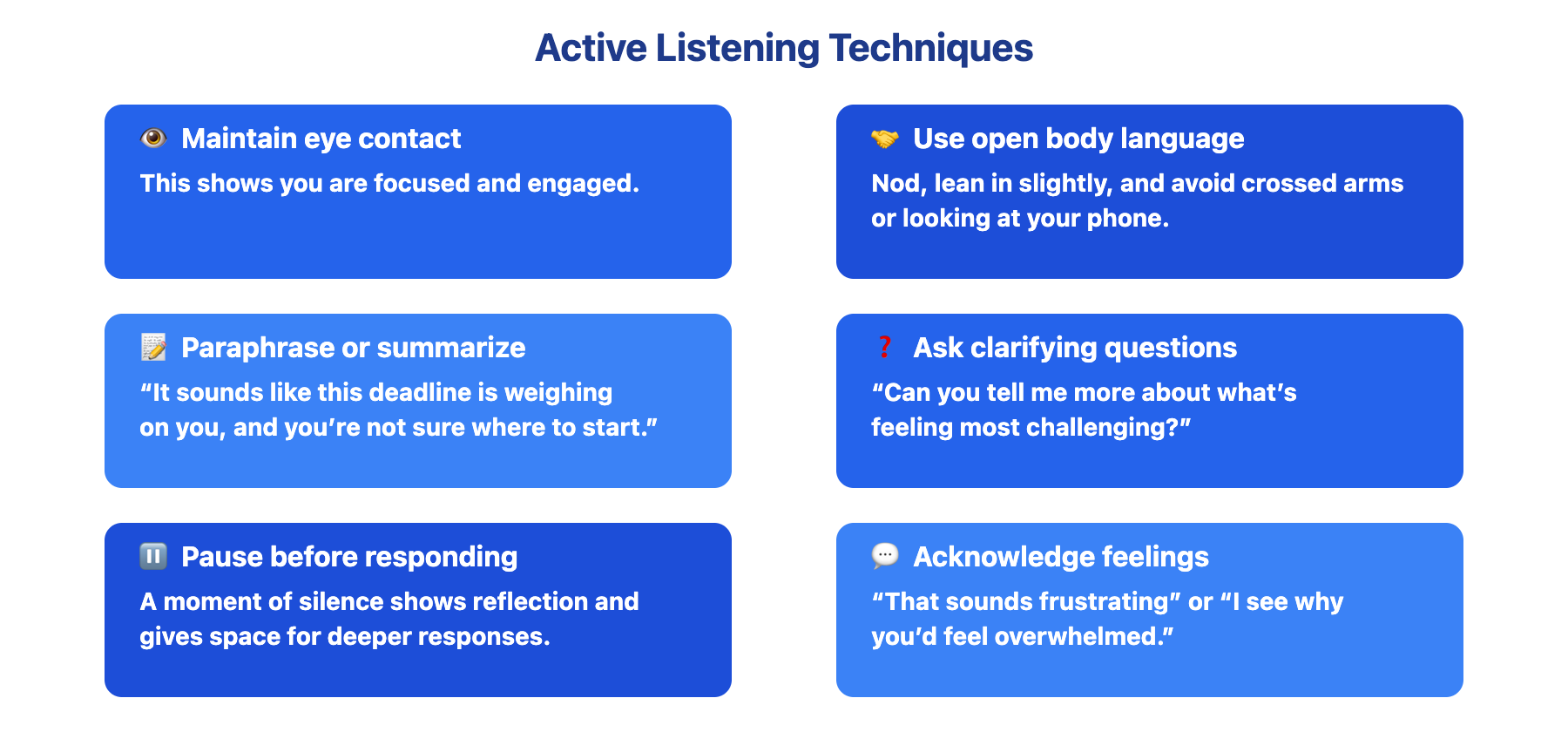As a first-time people manager, it can be tempting to jump in and solve problems for your team—after all, you want to be helpful and supportive. However, responding without immediately fixing is a crucial coaching skill. When you resist the urge to provide solutions, you give your team members space to think for themselves, build problem-solving skills, and develop confidence in their own abilities. This approach not only fosters independence and growth, but also signals trust in your team’s potential. Over time, it helps create a culture where employees feel empowered to take initiative and learn from challenges, rather than relying on you for every answer.
In this unit, you’ll discover how to respond as a coach in ways that empower your team, rather than simply offering solutions. Building on your ability to listen deeply, you’ll learn how to demonstrate active listening, validate emotions, and support autonomy—all essential for fostering growth and trust.
Active listening is more than just hearing words; it’s about showing you truly understand. In a busy work environment, it’s easy to get distracted or to focus on what you’ll say next. Active listening requires you to be fully present, both mentally and physically, so your team member feels genuinely heard.
To ensure you are actively listening, you may wish to try these techniques:

This kind of response signals that you’re present and engaged, rather than distracted or dismissive. It also encourages the other person to open up further, knowing their feelings are being taken seriously.
A core coaching skill is acknowledging what someone feels without immediately trying to "fix it". This helps your team build confidence and self-reliance. Instead of jumping in with solutions, try responses like "That sounds frustrating. What do you think would help most right now?" or "I can see why you’d feel overwhelmed. What’s one step you could take next?" These phrases validate the emotion and gently shift the focus back to the employee’s own ideas and agency. Avoid responses such as "Don’t worry, I’ll take care of it", which may feel supportive in the moment but can undermine ownership and growth.
When offering support, frame your help in a way that encourages autonomy. For instance, rather than saying "Here’s what you should do," you might ask, "Would it help to talk through some options together?" This approach keeps responsibility with the employee, while still showing you’re there to support them.
Here’s a realistic example of how to respond without fixing, using active listening and validation:
- Jessica: Hey Chris, do you have a minute? I’m feeling a bit stuck with the new project deadline.
- Chris: Of course, Jessica. I appreciate you bringing this up. It sounds like the deadline is causing some stress—can you tell me more about what’s feeling most challenging?
- Jessica: I’m worried I won’t be able to finish everything on time, and I don’t want to let the team down.
- Chris: That sounds tough. It makes sense you’d feel that way with so much on your plate. What’s one thing you think could help you move forward right now?
- Jessica: Maybe if I could clarify which tasks are the highest priority, I’d feel less overwhelmed.
- Chris: That’s a great insight. Would it help to talk through the priorities together and see where I can support you?
In this exchange, Chris demonstrates active listening by reflecting back Jessica’s concerns and validating her feelings. Instead of immediately offering a solution, Chris asks questions that help Jessica identify her own next steps, supporting her autonomy and confidence.
